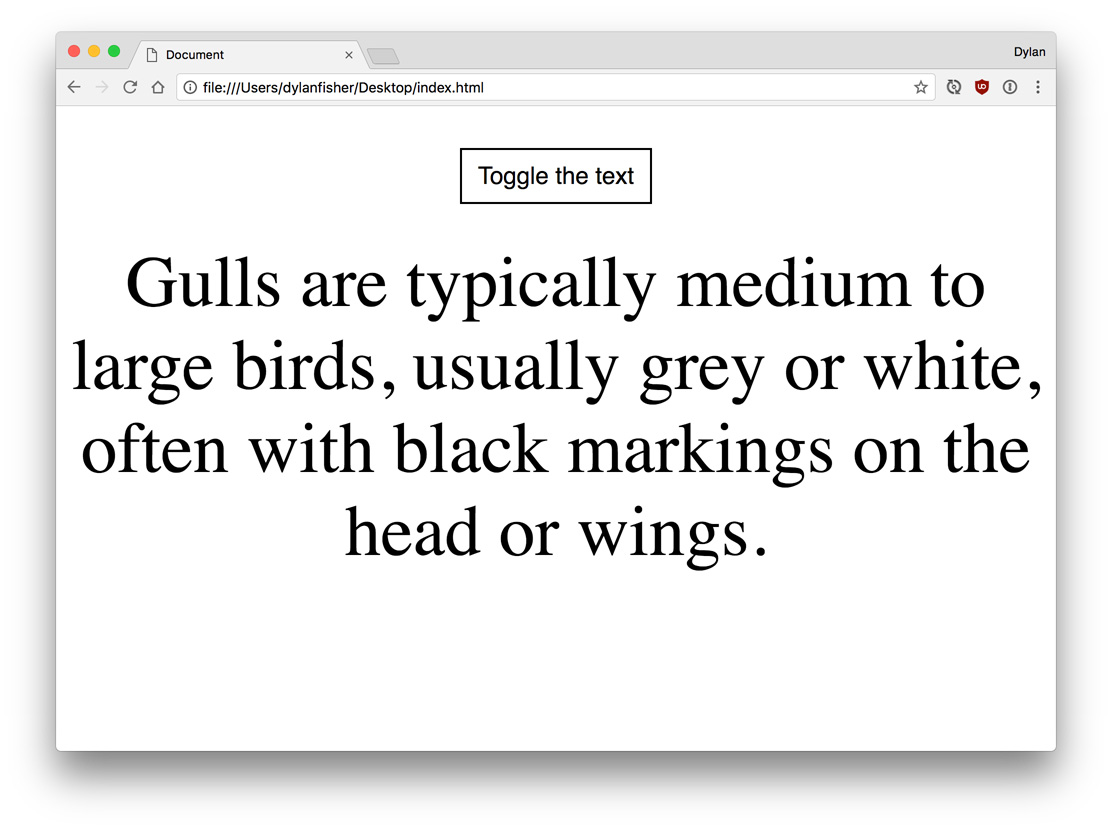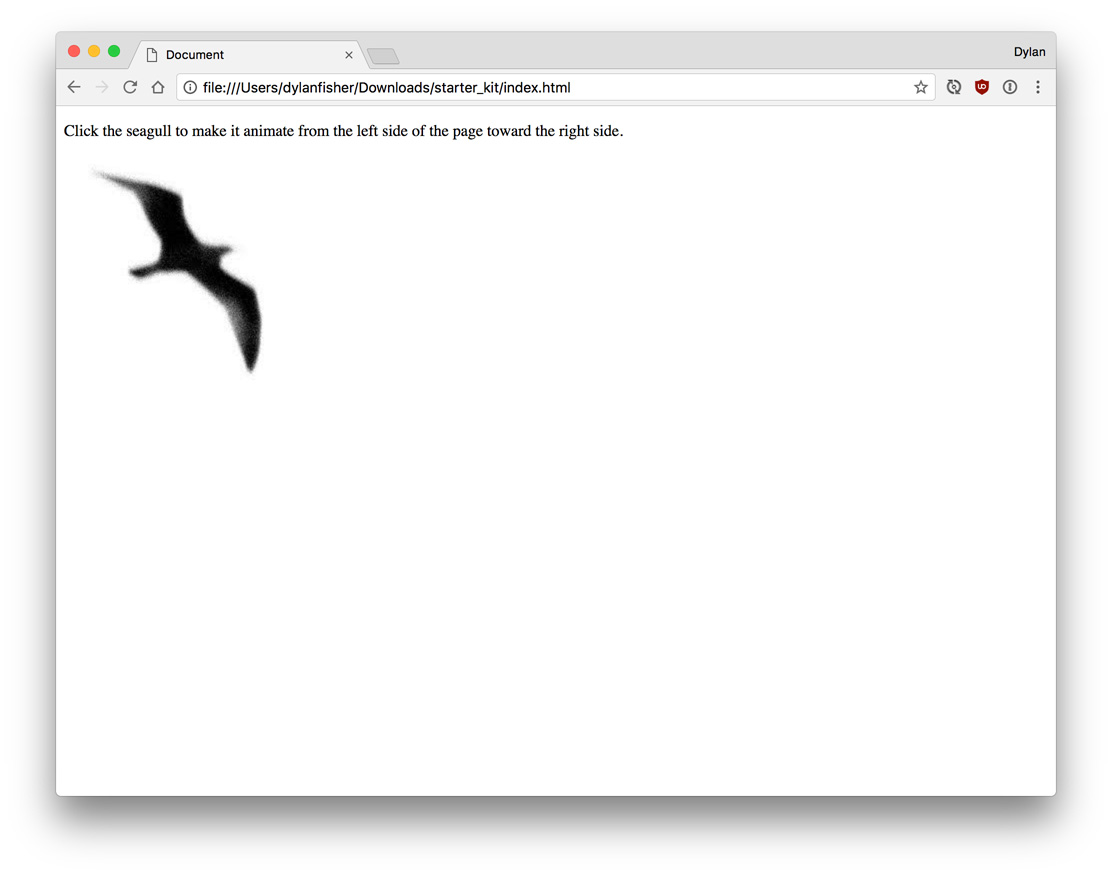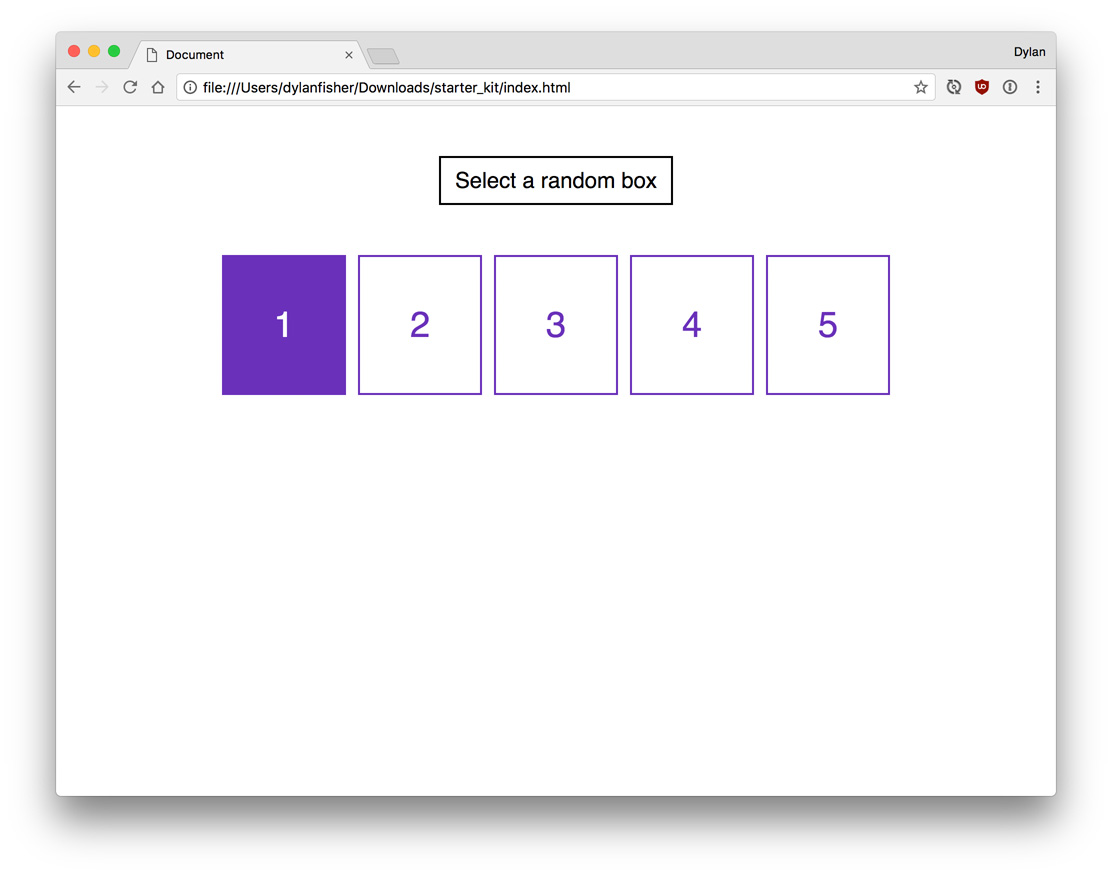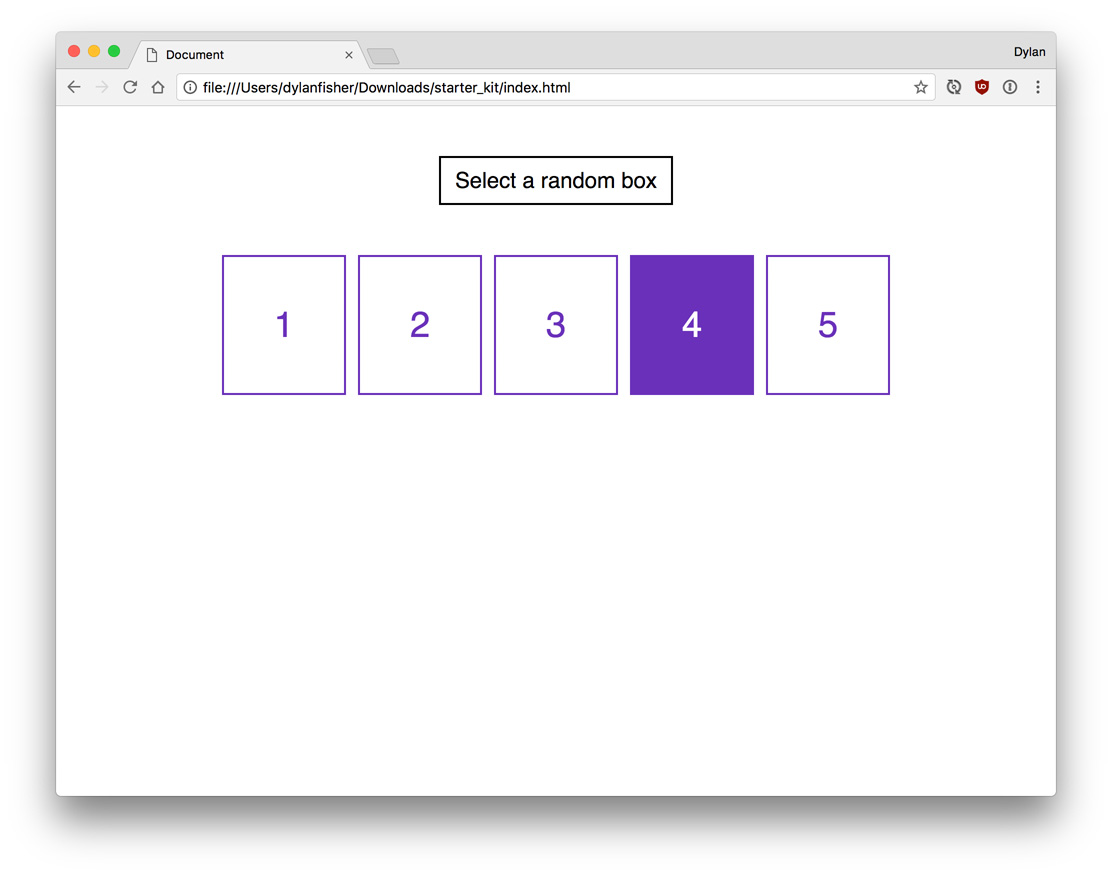HTML, CSS and jQuery in-class exercises
Instructions
- Download the starter kit.
- In groups of two or three, complete the following tasks. Complete any remaining tasks as homework, due next week.
- Try to complete each task using as short and simple code as possible. Try to replicate the look of the CSS and HTML exactly, including color, font size, etc.
- Copy the starter kit files for each task, so that each task has it’s own separate HTML, CSS and JavaScript.
1. Text Toggler
Use jQuery to bind a click event to the “Toggle the text” button that shows and hides the paragraph of text each time the button is clicked.
2. Go Fly
Using this image, create an interaction where when you click the seagull it moves it’s position across the screen.
You might choose to do this with animate or with addClass and doing the animation in CSS.
3. Random Boxes
Create an interaction so that when you click the “Select a random box” button, one of the outlined boxes is randomly chosen and becomes filled in.
All of the boxes should start out not filled in.
4. Keyboard input
Use the keypress event listener to do something fun when the user presses a key on their keyboard.
For example, you might want to define a series of “stamps” that map to a particular key on the keyboard.
$(document).on('keypress', function(e) {
var key = e.key;
var img;
var text;
console.log('keypress:', key);
if ( key == 'a' ) {
img = 'https://upload.wikimedia.org/wikipedia/commons/8/84/Apple_Computer_Logo_rainbow.svg';
} else if ( key == 'b' ) {
img = 'https://upload.wikimedia.org/wikipedia/commons/f/f7/Bananas.svg';
} else if ( key == 'c' ) {
img = 'http://www.alsointocats.com/wp-content/uploads/2013/01/lordmeowington-828x1024.png';
} else if ( key == 'd' ) {
img = 'https://images.petsmartassets.com/is/image/PetSmart/SV0401_CATEGORY_HERO-Dog-Dog-20160818?$SV0401$';
}
// etc.
if ( img ) {
$('body').append('<img src="' + img + '" style="position: fixed; top: '+ Math.random() * 100 + '%; left: ' + Math.random() * 100 + '%; transform: translate(-50%, -50%); max-width: 300px;">');
} else {
$('body').append('<h2 style="position: fixed; top: '+ Math.random() * 100 + '%; left: ' + Math.random() * 100 + '%; transform: translate(-50%, -50%); font-size: ' + Math.random() * 200 + 'px;">' + key + '</h2>');
}
});
You could also map the keys to play audio files instead of images, and create a musical instrument in your browser. This examples uses tone.js to generate the sound in JavaScript.
// Include tone.js in the head of your index file, before jQuery
// <script src="https://tonejs.github.io/build/Tone.min.js"></script>
// or, load it via jQuery for the sake of testing this demo in dev tools. -->
$.getScript('https://tonejs.github.io/build/Tone.min.js', function() {
console.log('tone.js is loaded');
});
$(document).on('keypress', function(e) {
var key = e.key;
var synth = new Tone.Synth().toMaster();
console.log('keypress:', key);
if ( key > 0 && key < 10 ) {
synth.triggerAttackRelease(('C' + key), '8n');
}
// etc.
});
4. Scrolling events
Here’s a snippet of code that will move you back to the top of the page if you reach the bottom.
var documentHeight = $(document).height();
var windowHeight = $(window).height();
$(window).on('scroll', function() {
var scrollTop = $(this).scrollTop();
if ( scrollTop + windowHeight >= documentHeight ) {
$(window).scrollTop(0);
}
});
Here’s a snippet of code that will display a progress bar that indicates what percentage of the page you’ve scrolled.
var documentHeight = $(document).height();
var windowHeight = $(window).height();
$('body').append('<div id="percentage" style="position: fixed; top: 0; left: 0; height: 30px; background-color: black;"></div>');
var $percentageIndicator = $('#percentage');
$(window).on('scroll', function() {
var scrollTop = $(this).scrollTop();
var percentage = scrollTop / (documentHeight - windowHeight) * 100;
console.log(percentage + '%');
$percentageIndicator.css({ width: percentage + '%' });
});
Here’s a snippet of code that will resize the items on the page by a factor of how much you have scrolled down the page.
var documentHeight = $(document).height();
var $elements = $('.sidebar > *, .page-content > *');
$(window).on('scroll', function() {
var scrollTop = $(this).scrollTop();
var scaleFactor = ((scrollTop / documentHeight * 4) % 1.5) + 0.2;
console.log('scaleFactor', scaleFactor);
$elements.css({ transform: 'scale(' + scaleFactor + ')' });
});
5. Click events
Here’s a snippet of code that will remove any items on the page when you click them.
$(document).on('click', function(event) {
// All javascript event handlers give you information about the event type in the event argument.
console.log(event);
// event.preventDefault() will prevent the default click event from happening in the browser.
// This makes it so that clicking a link doesn't actually go to that link.
event.preventDefault();
// You can refer to items on the event object, such as the target, which represents
// the individual DOM element you clicked.
var $clickTarget = $(event.target);
$clickTarget.remove();
});
This snippet of code is similar, but it will scale the element you click randomly each time you click it.
$(document).on('click', function(event) {
event.preventDefault();
var $clickTarget = $(event.target);
$clickTarget.css({ transform: 'scale(' + randomNumber(0.5, 1.5) + ')' });
function randomNumber(min, max) {
return Math.random() * (max - min) + min;
}
});





